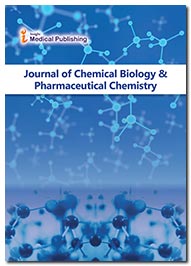ISSN : 2634-7814
Journal of Chemical Biology & Pharmaceutical Chemistry
2020 CONFERENCE ANNOUNCEMENT ON 23RD EDITION OF INTERNATIONAL CONFERENCE ON GREEN CHEMISTRY AND TECHNOLOGY NOVEMBER 22-23, 2020 IN BARCELONA, SPAIN
Assistant Professor, Analytical Chemistry, St. Petersburg State University, Russia, E-mail: szczyrba@gmail.com
Cumulative pressure of society and administrations for chemistry-based industries has led to expansion of more sustainable eco-friendly products and processes that both shrink waste and avoid toxic substances from entering the environment. Internationally there is a mounting requirement for cleaner processes and products, with many 'third-world' countries now insisting that certified technology is the cleanest available while the EU is leading the world in its requirements for greener products. In order to safeguard the future success of chemistry-based industries, it is vital to train students with the necessary tools, knowledge and experience.
In 2002, Cargill Dow (now Nature Works) won the Greener Reaction Conditions Award for their improved method for polymerization of polylactic acid. Unfortunately, lactide-base polymers do not perform well and the project was discontinued by Dow soon after the award. Lactic acid is produced by fermenting corn and converted to lactide, the cyclic dimer ester of lactic acid using an efficient, tin-catalyzed cyclization. The L,L-lactide enantiomer is isolated by distillation and polymerized in the melt to make a crystallizable polymer, which has some applications including textiles and apparel, cutlery, and food packaging. Wal-Mart has announced that it is using/will use PLA for its produce packaging. The NatureWorks PLA process substitutes renewable materials for petroleum feedstocks, doesn't require the use of hazardous organic solvents typical in other PLA processes, and results in a high-quality polymer that is recyclable and compostable.
Green chemistry takes the environmental mandate a step further and creates a new reality for chemistry and engineering by asking chemists and engineers to design chemicals, chemical processes and commercial products in a way that, at the very least, avoids the creation of toxics and waste.
The Green Chemistry aspires to preserve and enrich the high quality provision of green and sustainable chemistry to permit a strategic step change to a low carbon, bio-based economy, grounded on core values of high quality pure and translational research, education, training, networking and partnerships entrenched within a framework of sustainable growth.
It’s important to note that the scope of these of green chemistry and engineering principles go beyond concerns over hazards from chemical toxicity and include energy conservation, waste reduction, and life cycle considerations such as the use of more sustainable or renewable feedstocks and designing for end of life or the final disposition of the product.
It’s important to note that the scope of these of green chemistry and engineering principles go beyond concerns over hazards from chemical toxicity and include energy conservation, waste reduction, and life cycle considerations such as the use of more sustainable or renewable feedstocks and designing for end of life or the final disposition of the product.
Fundamental information about Green Chemistry 2020 is going to be discussed in 23rd Edition of International Conference on Green Chemistry and Technology which is going to be held during November 22-23, 2020 in Barcelona, Spain with the theme “To foster cutting-edge research for the enlargement of sustainable technologies.” under the Organizing Committee Members.
Contact Details:
Ethan Mathew
Open Access Journals
- Aquaculture & Veterinary Science
- Chemistry & Chemical Sciences
- Clinical Sciences
- Engineering
- General Science
- Genetics & Molecular Biology
- Health Care & Nursing
- Immunology & Microbiology
- Materials Science
- Mathematics & Physics
- Medical Sciences
- Neurology & Psychiatry
- Oncology & Cancer Science
- Pharmaceutical Sciences
